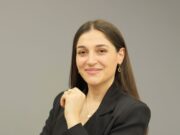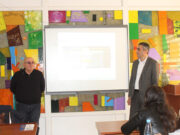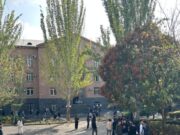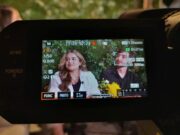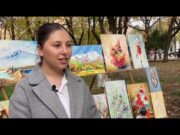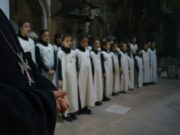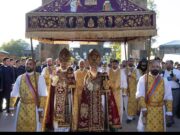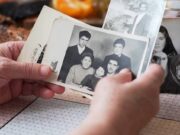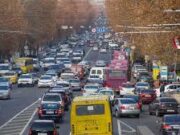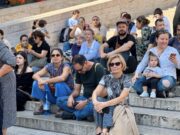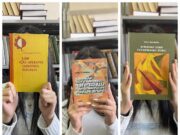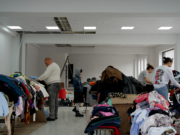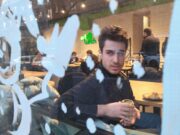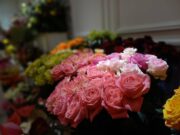Dr. Hrayr Jebejian
I was born in Beirut, Lebanon, on February 8, 1957. I am a Lebanese-Armenian who has lived with dual identities and histories all my life – ones filled with struggle and wars, to say the least. Lebanon, for one, has a long history of local and regional conflicts and just went through a devastating explosion that wiped out half of its capital city. As for being Armenian in the 21st century: it means being in a constant battle for national identity and fighting a century-long battle for justice, i.e., the recognition of the first ethnic cleansing of the 20th century – the Armenian Genocide. The two unfortunately have several things in common (as you can tell): mainly the struggle to build life in the midst of uncertainties, life that goes beyond that of the individual and embraces different aspects of community at large.
I moved to Cyprus in 2005 and subsequently received my Cypriot citizenship. I have been working in the Arabian (Persian) Gulf countries for the last 30 years. I often find myself asking the recurring question: “Where is home”? Is it Beirut, Nicosia, or better yet, Kuwait? I suppose I am what you may call the archetype of an Armenian living in diaspora.
Don’t get me wrong, my heart is filled with love and appreciation for all these countries that have given me citizenships, identities, education, shelter… accompanied with a few challenges along the way as well – mainly the challenge of staying alive while growing up in war-zone Beirut. Nevertheless, it made me the person I am today and incredibly proud of my rich heritage (which I will talk more of throughout this piece).
I also have a sensation of deep joy and pride in my heart when I think of the Republics of Armenia and Artsakh. Each of my visits to my homelands only reinforces this sensation and strengthens my Christian faith. The homelands where my identity is rooted deep in the soil and my sense of belonging is revealed.
There are reasons for that, though.
As a third-generation Armenian living in diaspora, I carry, together with every Armenian I know, the pain of the Genocide. We carry the pain of our ancestors who were massacred and the pain of being deprived of living in the land which is rightfully ours.
In 1915, my father was deported from his home in Aintab. He was barely a year old then. His family settled in Aleppo, Syria, and then moved to Beirut, Lebanon, where I was born. My family lost 25 of its members during the Armenian Genocide perpetrated by Ottoman Turkey from 1908 to 1915, along with all their physical properties. I haven’t met them, but I know them because I cherish the memories and legacies they left behind through those who survived. I see their faces every time I look through old pictures in my family album and imagine a life in Aintab, and what it would have been like if they had lived.
As ironic as it may sound, this pain has in a sense made my life all the more meaningful. This same pain has made me realize that it is possible to live, prosper, and have hope for life. To live and prosper as an Armenian in diaspora, away from home, but never, not even for a minute, giving up on that hope, that we will one day go back home. Albeit home (historical Armenia) is not “reachable” at the moment, the republics of Armenia and Artsakh are.
When reflecting on the idea of how pain and suffering can bring people together, I stumbled on Walter Brueggemann’s work. Brueggemann is a prominent American theologian and believes that the task of prophetic ministry and imagination is that of bringing people to engage with their experiences of suffering and death, which energizes and links people to hope. Brueggemann explains that this hope helps the individual cut through the despair which might otherwise seem unresolvable or unending.
I really think the present war in Artsakh (Nagorno-Karabakh), that has been on-going for nearly a month now, can generate this same hope. This hope, which is the prophetic ministry of the Armenian people, will cut through the pain and despair of the Armenian Genocide and turn it to peace and justice – the peace and the justice Armenians have been longing for their whole lives.
For some context on the war, here’s a little history of the region:
The Republic of Artsakh or Nagorno Karapagh is a de facto independent state and shares borders with Armenia, Iran, and Azerbaijan. Artsakh is considered to be the second Armenian Republic. The capital of Artsakh is Stepanakert and is the largest city of the Artsakh Republic. It is the cultural, educational, and economic center of the region. Stepanakert is located on the eastern slopes of Karapagh’s mountain chain, at the left bank of the Vararakn River. The capital was originally named after this river but was later renamed in honor of Bolshevik politician and revolutionary Stephan Shahumian.
Stepanakert is a modern city with wide, clean streets, new builds, and nice parks. The predominantly Armenian-populated region (99.7%) of Nagorno-Karapagh was claimed by both the Azerbaijan Democratic Republic and the First Republic of Armenia when both countries became independent in 1918 after the fall of the Russian Empire, and a brief war over the region broke out in 1920. The dispute was largely shelved after the Soviet Union established control over the area and created the Nagorno-Karapagh Autonomous Oblast (NKAO) within the Azerbaijan SSR in 1923.
When the Soviet Union fell, the region re-emerged and became the subject of what I see is a series of endless wars and suffering between Armenia and Azerbaijan. In 1991, a referendum was held in the NKAO and the neighboring Shahumian region which resulted in a declaration of independence. Ethnic conflict between Armenians and Azeris led to the 1991–1994 Nagorno-Karapagh War, which ended with a ceasefire along the current borders.
The recent military strike and the war against Artsakh by Azerbaijan, Turkey, and Islamist Jihadists, is actually a matter of life or death for Armenians. As I’m writing my thoughts down, the capital Stepanakert and other cities are being heavily bombarded. The country’s historical churches and monuments are being burnt to the ground and hundreds of innocent civilians are dying. Azerbaijan and Turkey consist of more than 90 million people. Whereas Armenia and Artsakh are barely three million put together. I cannot help but be reminded of the story of David and Goliath in the Bible, mainly when looking at the power discrepancies.
Is history repeating itself? Most likely, yes. 105 years on, we are faced with the same power trying to bring us down to our knees.
We are in a different scenario today than that of the crimes and ethnic cleansings of 1908 and 1915, though. Let me tell you why I think that is.
On September 30, 2019, I was lucky enough to be in Stepanakert, Artsakh, for the second time, presenting my book Armenian Diasporan Lives: As I Saw Them. The event took place in the National University of Artsakh. I also had a meeting with the Minister of Foreign Affairs during this visit. I enjoyed the beautiful country and my fellow Armenians living in Artsakh. They shared their passion for the land and for the Armenian identity. The landscape is so beautiful and the people even more so. One year on, and I am still in awe of all the beauty. It is truly life changing.
Today’s war in Artsakh is in a sense a battle to hold on to that beauty, that of the land and of its peoples’ hearts. The beauty of being Armenian, really. It is this beauty that is being so passionately protected by the Armenian soldiers who are committed to defend their land up to martyrdom. The young boys on the frontline are fighting because they want to live their lives in their homeland with dignity.
For what it’s worth, my intent while writing this was not to focus on the Artsakh war with regards to what it might mean in the current geopolitical scene of the region and the world. Many proxy wars are going on in the world and numerous political analyses are being written in the media. A whole separate four pager could be written up about that. My perspectives in this article are rather those of an ordinary Armenian with strong attachments to his national, cultural, and Christian heritage and believes that the latter is possible through the homeland.
Looking at Artsakh from a patriot’s perspective, no war or physical force of any kind can eradicate its beauty. Armenians want peace, justice, and the right for the self-determination and the recognition of their homeland. From an Armenian’s perspective living in a scattered diaspora, I see bloodshed and unrest: a very high price we continue to pay, in our struggle for peace and justice.
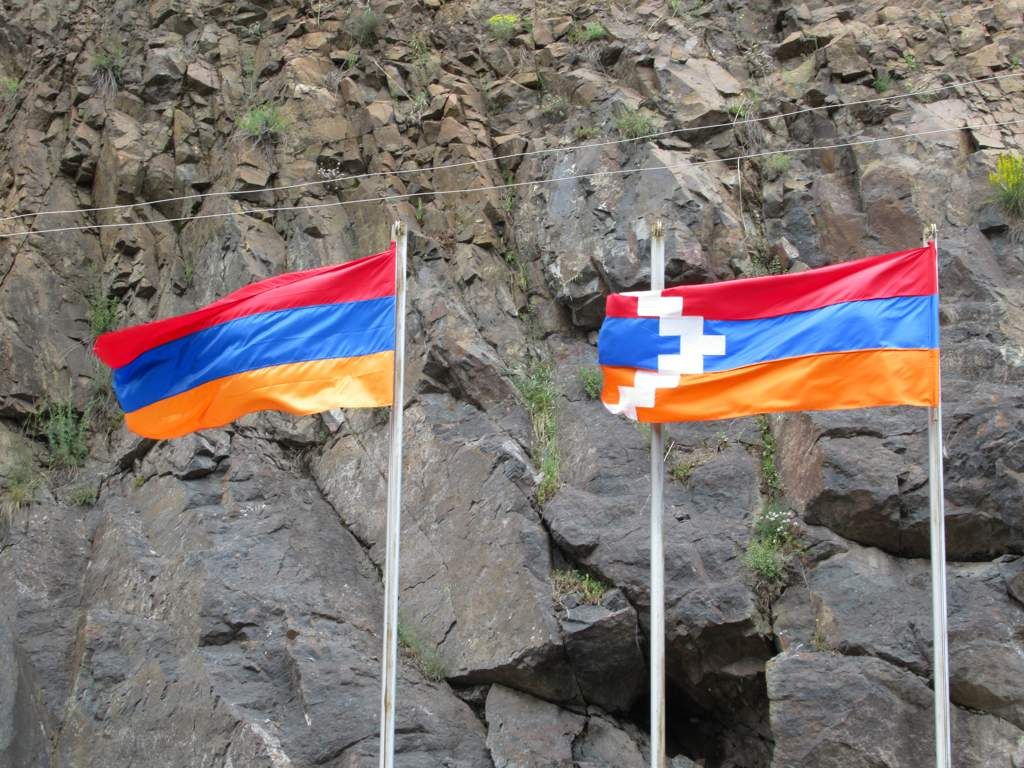
Armenia’s total homeland area was around 300,000 sq-km. The present Republic of Armenia is 29,743 sq-km. We lost almost 90% of it over the years, during the Genocide, and the many political upheavals which followed thereafter. There is indeed not much land left to spare, is there?
As I follow the fierce battle from a distance, my prayers are with my fellow Armenians. I stand with my people as they struggle to stay alive with dignity. I stand with my army in Artsakh as they struggle for peace and justice. May the soul of the Armenian soldiers and the civilian martyrs rest in peace.
The beauty of Artsakh will never fade, and it will not be defeated.
Reverting to the biblical story of David and Goliath: David beats Goliath, even though the fight and power dynamics were uneven. David beats Goliath because he was fighting for the GOOD cause.
This is the Armenians’ war for peace and justice. It is through this struggle for peace and justice that GOOD is created.
And the GOOD always wins.
………………………………………
Hrayr Jebejian is General Secretary of the Bible Society in the Gulf. He holds a Doctor of Ministry degree in Bible Engagement from the New York Theological Seminary. Jebejian is the author of three books, along with articles published in academic journals and encyclopedias. He is a recipient of the Ambassador of the Motherland medal from the Ministry of Diaspora of the Republic of Armenia.



